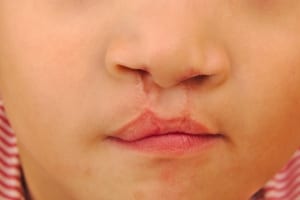Herzliya Medical Center
Tel: +972-9-959-4888
09:00-18:00
 Long gone are the days when being born with a cleft lip and cleft palate meant a stigma for a lifetime. Modern surgical techniques have made these malformations correctable, both in terms of functionality and aesthetics. Cleft lip and cleft palate surgery are some of the most common procedures plastic and craniofacial surgeons perform at Herzliya Medical Center with ever-improving surgical solutions and complementary dental care or speech therapy options.
Long gone are the days when being born with a cleft lip and cleft palate meant a stigma for a lifetime. Modern surgical techniques have made these malformations correctable, both in terms of functionality and aesthetics. Cleft lip and cleft palate surgery are some of the most common procedures plastic and craniofacial surgeons perform at Herzliya Medical Center with ever-improving surgical solutions and complementary dental care or speech therapy options.
The treatment of this congenital disease requires a multi-disciplinary and comprehensive approach: cleft lip repair goes far beyond the surgery itself. At Herzliya Medical Center a team of specialized experts works in unison to address the complex condition and pave the way for the actual cleft lip and palate surgery.
The team typically includes:
Doctors still don’t know the exact cause of these malformations, but they generally attribute it to both genetic and environmental factors, the latter mostly in association with drug and radiation exposures or dietary tendencies.
There are a number of variations a cleft lip can manifest in children, depending on the extent of separation of the upper lip, the laterality and the number of the clefts appearing on the lip. On this ground several types of the cleft palate can be distinguished:
A cleft lip repair may be done from the 10th week on after birth.
A cleft palate can occur in isolation in the form of a midline cleft in the secondary palate or in combination with a cleft lip. The occurrence rates of the latter are much higher, however, the likelihood of accompanying multiple defects (such as myopia, glaucoma, retinal detachment and hearing difficulties) is far greater in case of an isolated cleft lip.
The aim of cleft lip repair is to restore the normal anatomical structure, function, appearance, and mobility of the lips while improving associated nostril deformities as well. The operation ideally takes place between 1 and 4 months of age. After the child receives general anesthesia, the incisions are made in both clefts creating tissue flaps. Then the flaps, along with underlying muscles, are stitched together restoring proper movement and the normal appearance of the nostril floor, philtral ridge and vermilion cutaneous border.
Cleft palate repair is ideally conducted between 3 and 15 months of age. Depending on the place and extent of separation, various procedures are applied to reconstruct the muscles and the lining of the hard and soft palate. Soft palate repair can be done form the age of 3 months, however, with hard palate reconstruction it is advisable to wait until the teeth are out. During the procedure, the surgeon makes an incision on both sides of the separation and gently pulls the tissues toward the center and joins them with stitches.
If the child has a cleft in the alveolar dental arch, the above operation cannot be implemented without the use of a bone graft, which is normally implanted between the ages of 6-8, depending on the process of permanent teeth growth. Taken from the iliac crest some cancellous bone is inserted into the alveolus after the proper approximation of the alveolar arch.
Experts at Herzliya Medical Center unanimously recommend starting the treatment as early as possible to prevent the psychological impact a deformity potentially has on the child’s development. The aim of the surgery is to improve the patient’s capacity to speak, eat, breathe, and hear, and also to ensure a normal appearance to the face.
Doctors at the ENT Department parallel to the cleft lip and palate surgery strongly advise the implantation of a thin tube in the eardrum to ensure the ventilation of the middle ear and prevent ear infections particularly common among cleft patients.